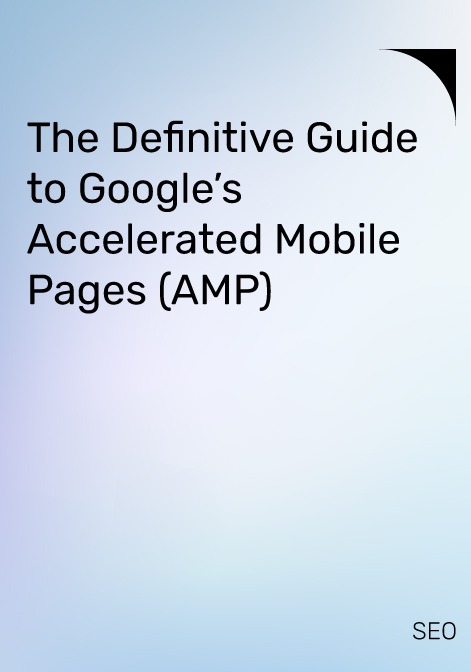Mobile devices have become a significant part of internet usage in the digital age. As smartphones and tablets advance, more people access the Internet through their mobile devices. Accelerated Mobile Pages (AMP) are Google’s response to the growing demand for faster, more streamlined mobile user experiences.
This comprehensive guide helps content creators, web developers, SEO enthusiasts, and marketing professionals understand the power of AMP for mobile website design and online content delivery.
What are Accelerated Mobile Pages (AMP) Pages?
Mobile Accelerated Pages, or AMP, is an open-source initiative that improves the performance of web content on mobile devices. Users can experience a seamless and ultra-fast browsing experience by allowing webpages to load almost instantly.
AMP simplifies and ensures efficient content delivery by restricting certain types of HTML, prioritizing resource loading, and using Google’s cache.
How AMP works?
AMP restricts traditional HTML, CSS, and JavaScript web technologies. Instead, it relies on its web components to ensure a fast and responsive mobile experience. When a user navigates to an AMP page from search results, the page is preloaded and served from the AMP Cache. This is a content delivery network that is optimized for AMP content.
Technical Details of AMP
The AMP HTML framework consists of existing HTML tags with specific requirements. For example, images must include a width and height attribute to ensure the page layout does not shift while the page is loaded.
AMP Cache delivers all valid AMP documents through a proxy-based content delivery network. It offers performance benefits, such as automatic performance optimization and the ability to serve AMP pages faster than publishers’ servers.
AMP offers several advantages for content publishers and website users, complying with the main principles of mobile optimization: speed and usability.
User Benefits
-
Faster load times up to 4 times faster than regular pages.
-
Improved mobile browsing experiences with content loading immediately upon selection.
-
Reduced data usage is critical for users with limited data plans or browsing in areas with poor connectivity.
Publisher Benefits
-
Increased mobile traffic and user engagement due to better access ease and faster load times.
-
Improved search engine visibility and rankings as Google prioritizes mobile-friendliness and page speed.
-
Higher ad revenues can be achieved through speedier ad loading, improving visibility and click-through rates.
-
Enhanced user experience, leading to a reduction in bounce rates and longer site visits.
Additional Reads: Technical SEO Checklist
Potential Drawbacks and Considerations of AMP
While the speed and user experience benefits of Accelerated Mobile Pages are clear, some potential drawbacks and considerations should be addressed.
Design and Customization Limitations
Because AMP has strict HTML and CSS options, web designers are often limited in their creativity and branding freedom. Some publishers may be unable to accommodate custom fonts, complex layouts, and certain interactive elements according to AMP guidelines.
Potential for Slower Loading Times
AMP relies heavily on the AMP Cache and its proprietary technologies, which may slow the load time of non-AMP cached pages. When a user navigates from an AMP page to a non-AMP page, there may be an inconsistent user experience.
Infrastructure Dependency
The AMP Cache, one of the key components of the AMP architecture, is heavily dependent on Google’s infrastructure. For AMP content delivery, this can result in dependency and unpredictability, especially during high network traffic.
Not Suitable for All Websites
AMP is meant to enhance mobile user experiences, but it might not be appropriate for every type of website. Some websites may be unable to use AMP due to its limitations, such as those with advanced features and functionality.
Creating AMP Pages
The process involves several key steps for those considering implementing AMP on their websites.
Technical Implementation
To start with AMP, one must create AMP-compliant versions of their web pages. This involves converting existing webpages to AMP HTML and ensuring all the required AMP elements are in place.
AMP Validation
Once AMP pages are created, valida*ting them using the AMP Project’s validation tools is crucial. This step ensures that the pages are indeed AMP-compliant and render correctly across all mobile devices.
Resources and Tools
The AMP Project offers numerous resources and tools, including documentation, code samples, and plugins, to assist with creating and maintaining AMP pages. It is recommended that these resources be used to stay updated with the trends in AMP development.
Additional Reads: Saas SEO Strategy
The future of AMP
AMP is not a static project but is rapidly evolving, constantly adding updated features and capabilities. Google continues to invest in AMP, indicating a long-term commitment to the project.
Ongoing development
Collaborating with the developer community, the AMP Project team continuously enhances AMP with updated features, components, and tools. Some ongoing development includes more complex interactive elements and performance optimizations.
Alternative technologies
While AMP is a leading mobile optimization framework, it is not the only one. Alternatives such as Facebook Instant Articles and Apple News exist, each with benefits and considerations. Website owners must evaluate which platform best aligns with their business goals and user requirements.
Conclusion
This technology represents a significant advance in mobile web technology and offers substantial performance and user experience benefits.
It is, however, not a one-size-fits-all solution, so you should carefully consider the implications for your website.
While AMP could unlock a new level of mobile engagement for some, a balanced approach incorporating the best mobile optimization strategies may be the best solution for others.
Is AMP right for your website?
This remains a question that each website owner must answer based on their unique situation.
To make an informed decision on adopting AMP into your mobile web strategy, you should evaluate the benefits and drawbacks, keep up with the latest developments, and experiment with Accelerated Mobile Pages in a limited capacity.




